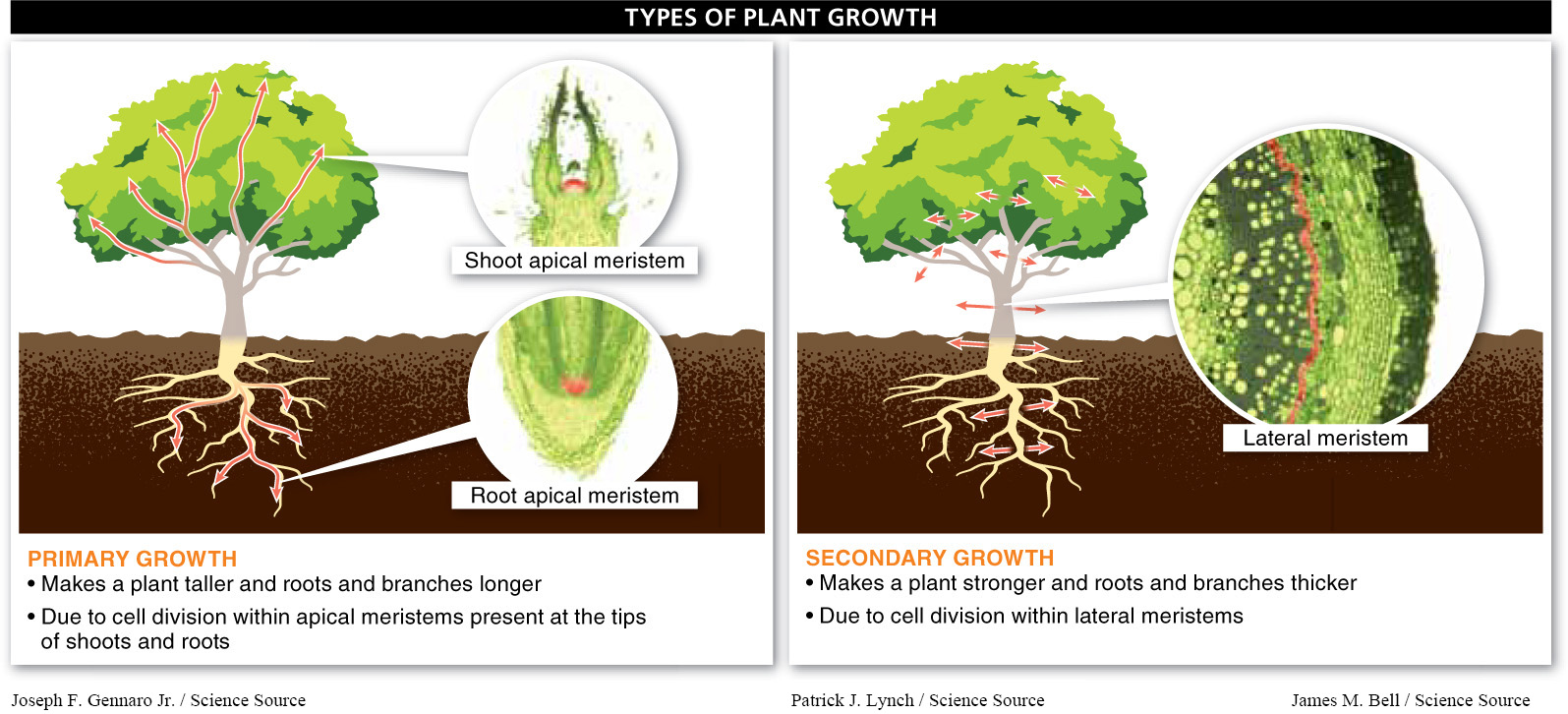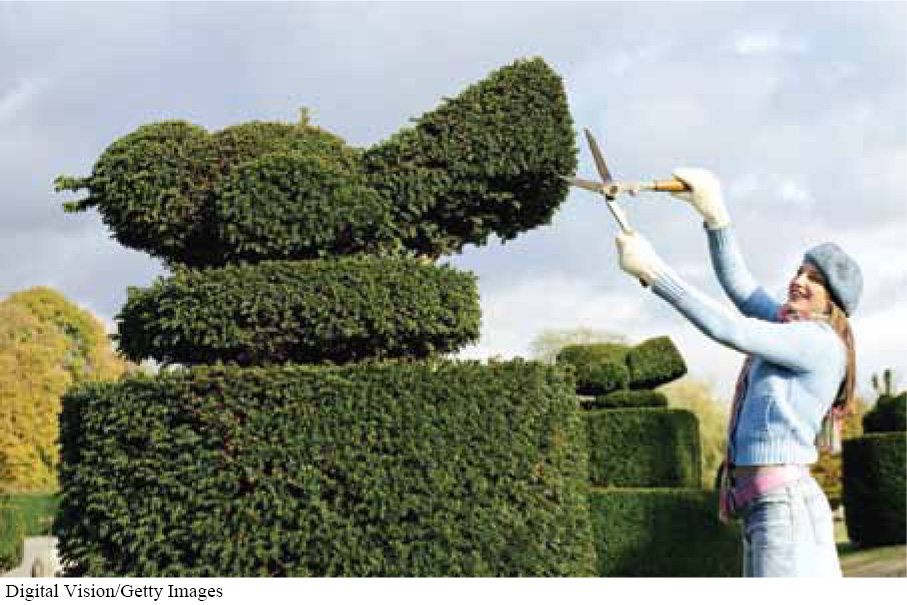So far we have explored the reproductive processes of plants. First they make pollen and eggs. Then they manage to get the sperm from pollen to an egg and achieve fertilization. The embryo then remains dormant as a seed, carried within a fruit until it is dispersed and arrives at a place to live. Once conditions permit, the seed germinates and the new plant begins to grow. In this and the following sections, we examine how growth occurs.
Plants and animals grow very differently. Three particular features stand out. First, in most animals, growth is determinate. In other words, after a period of maturation and “growing up,” the growth more or less comes to an end. Most plants, though, keep on growing taller and thicker their whole lives. Second, perhaps more oddly, despite their continuous growth, most trees are largely made up of dead cells. Within the branches and roots, all the water-

Plants have two different methods of growing, each for height and one for width, which we explore in more detail in the next two sections. Primary growth causes plants to get taller, and secondary growth makes them thicker (and stronger). For both types, the cellular processes are similar and begin with regions called meristems. These are clusters of active, dividing cells. Acting like human stem cells, the meristems contain perpetually youthful cells that can (1) repeatedly divide and (2) develop into any type of plant tissue. Nowhere else in an adult plant body are there cells with these unlimited developmental options. So, even in a 4,000-
The two different types of plant growth depend on the activities of two different types of meristem (FIGURE 18-28).

1. Apical meristems are clusters of meristem cells at the ends of roots and shoots or branches that repeatedly divide to produce primary growth, making the plant taller and plant parts (roots and branches) longer. This process is in dramatic contrast to human growth. It would be as if we grew by continuously adding more material on top of our heads and at the ends of our hands and feet.
751
Axillary buds that are lower on the plant are inhibited from growth as long as the apical meristem is present. If the top meristem of a shoot is cut off, axillary buds lower on the plant increase their growth. This causes the plant to grow “out” more than “up.” Taking this approach to the extreme, gardeners have found that it is possible to cause plants to grow into dramatic shapes through continued pruning (FIGURE 18-29).
2. Lateral meristems—not present in all plant species—

TAKE-HOME MESSAGE 18.14
Plants generally grow for their entire lives, using two types of growth. Primary growth makes plants taller and longer. Secondary growth makes plants thicker and sturdier.
How are meristems like human stem cells?
Much like human stem cells, cells within a meristem are able to repeatedly divide by mitosis and develop into any type of tissue.
752